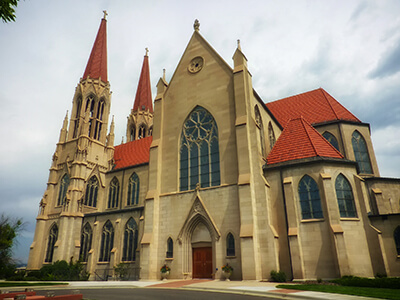



Mission
To improve the responses to child and youth victims and their families by providing consistent, coordinated, and collaborative responses that address the presenting issues and the full range of victims' needs.
Strategies
Vision 21 Linking Systems of Care (LSOC) for Children and Youth in Montana facilitated a comprehensive continuum of services for youth victims and their families who were often served by multiple agencies that require integration and linkage. Strategy highlights included: maintaining and enhancing a network of stakeholders and partners with a shared vision of reaching under-served child and youth victims of violence; collaborating to develop a strategy to link systems of care based on Montana’s specific environment; and piloting the strategy in selected communities. During implementation, young victims and their families from across pilot sites representing 18 different Montana counties have been linked to services, such as mental health care, parenting classes, and transitional housing assistance for domestic violence survivors.
Funded Agency
Montana Board of Crime Control (MBCC) was the designated state agency that administers millions of grant dollars dedicated to preventing and addressing crime statewide. MBCC is headed by an 18-member board appointed by the governor and represents law enforcement, criminal and juvenile justice system stakeholders, and citizens, including the first Montanans, our state’s Native Americans. The mission of MBCC is to proactively contribute to public safety, crime prevention, and victim assistance through planning, policy development, and coordination of the justice system in partnership with citizens, government, and communities. For more information on Montana's state project visit their project website.
State Data FAQs
What do we know about children and youth populations in Montana based on the Census?
What are the racial and ethnic demographics for children and youth populations in Montana?
According to 2017 population estimates, White youth comprise 81% of the population ages 0-24 in Montana, with American Indian youth comprising 10%, Hispanic 6%, Black 2%, and Asian 1%.
How are children and youth populations changing in Montana?
Between 2000 and 2017, the number of White children and youth, ages 0-24 within the state general population, decreased 2%. In contrast, the population of Black child and youth increased 125%, Hispanic 98%; Asian 67%; and American Indian 9%.
What do we know about Montana from national law enforcement data collections?
How many youth victims of violence are known to law enforcement in Montana?
A reported 11,300 victims of violent crime were known to law enforcement in Montana. Nearly 1 in 5 victims (approximately 2,000) were youth under the age of 18..
Among youth victims, what is the most common offense in Montana?
Sex offenses (e.g., fondling and rape) were the most serious offense for nearly two-fifths (38%) of youth victims while one-third of youth were victims of simple assault. More than half of all assaults (aggravated and simple) involved boys, and nearly 80% of sex offense victims were girls.
How many youth are victims of domestic violence in Montana?
Of the 2,000 youth victims of violence, nearly half (~970) were victims of domestic violence.
Where are youth most likely to be victimized in Montana?
Sixty percent of all youth victims of violence were victimized in a residence and about 1 in 8 (12%) took place at school. However, more than 80% of youth domestic violence victims were harmed at a residence.
What is known about the offenders in Montana?
Among all youth victims of violence, 43% of youth were victimized by an acquaintance and 38% were victimized by a family member. Among youth domestic violence victims, about half were victimized by a parent.
What do we know about Montana from national surveys of youth behavior in schools?
How prevalent is bullying at high schools in Montana?
About 1 in 4 high school students reported being bullied while at school and nearly 1 in 5 reported being subject to electronic bullying. Overall, 5% of high school students reported that they did not go to school because they felt unsafe.
How prevalent is dating violence among high school students in Montana?
Nearly 1 in 10 (8%) of all high school students reported experiencing physical dating violence (i.e., being hit, slammed into something, or injured with an object or weapon on purpose), and 1 in 10 reported experiencing sexual dating violence (i.e., kissing, touching, or being forced to have sex when they did not want to by someone they were dating).
What do we know about Montana from national data collections concerning child abuse and neglect?
How many children who received an investigation were substantiated as victims in Montana?
In 2016, there were 17,538 reports of maltreatment involving 13,702 unique children. Three-fourths of these reports were unsubstantiated, and 5% were closed with no finding of maltreatment. One-fifth of all reports were substantiated, resulting in 3,116 unique child maltreatment victims in 2016.
What is the most common type of child maltreatment in Montana?
Neglect (91%) was by far the most common form of maltreatment. Comparatively, physical abuse (4%), sexual abuse (3%), and psychological maltreatment (2%) were much less common.
How many children die as a result of maltreatment in Montana?
In 2016, there were no reported fatalities as a result of maltreatment.
What is known about child maltreatment perpetrators in Montana?
Parents and other family members are the most common child maltreatment perpetrators. In 2016, parents accounted for 89% of reported perpetrators and 3% were other relatives. Unmarried partners of a child’s biological parent accounted for 5% of perpetrators.